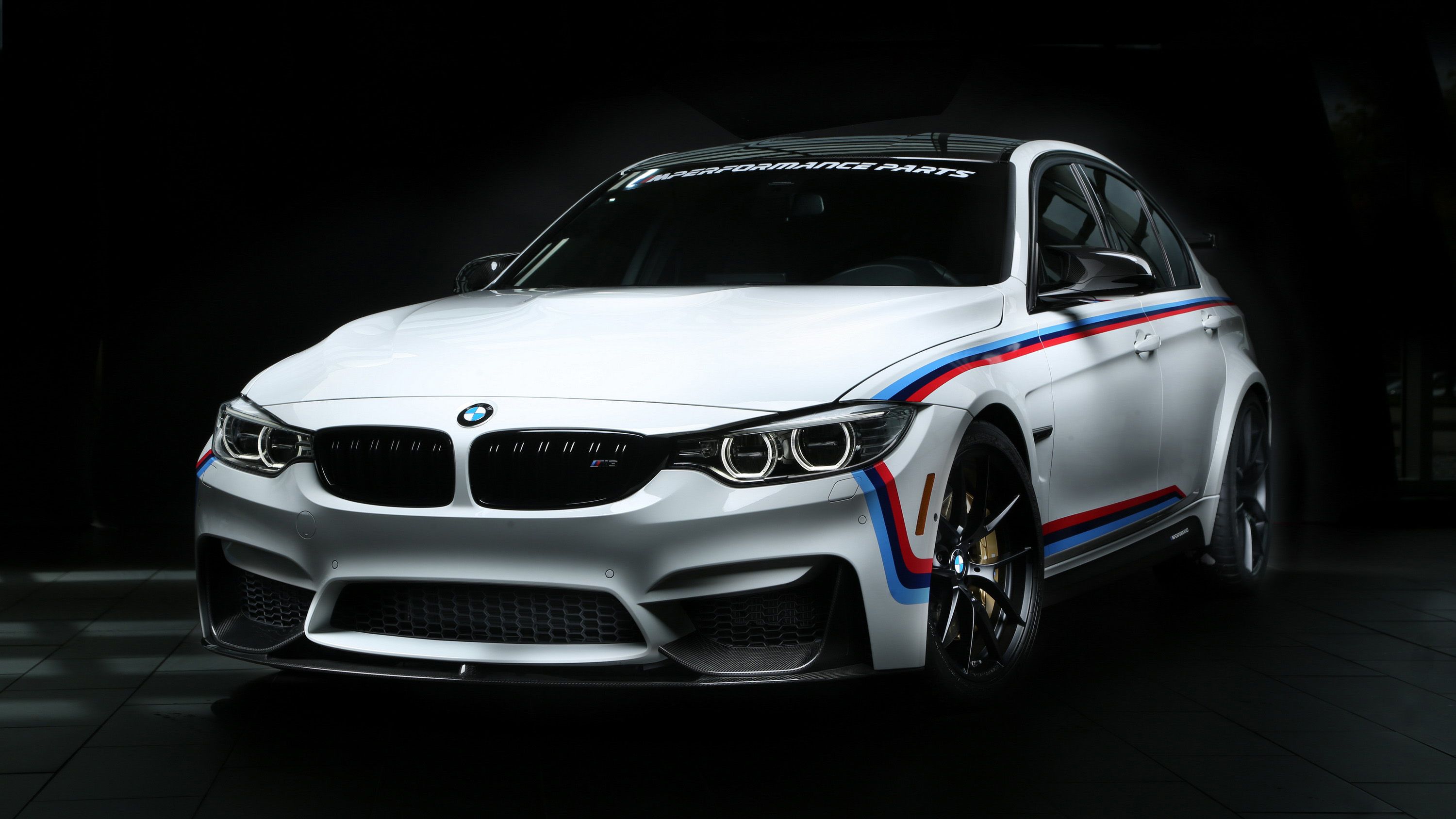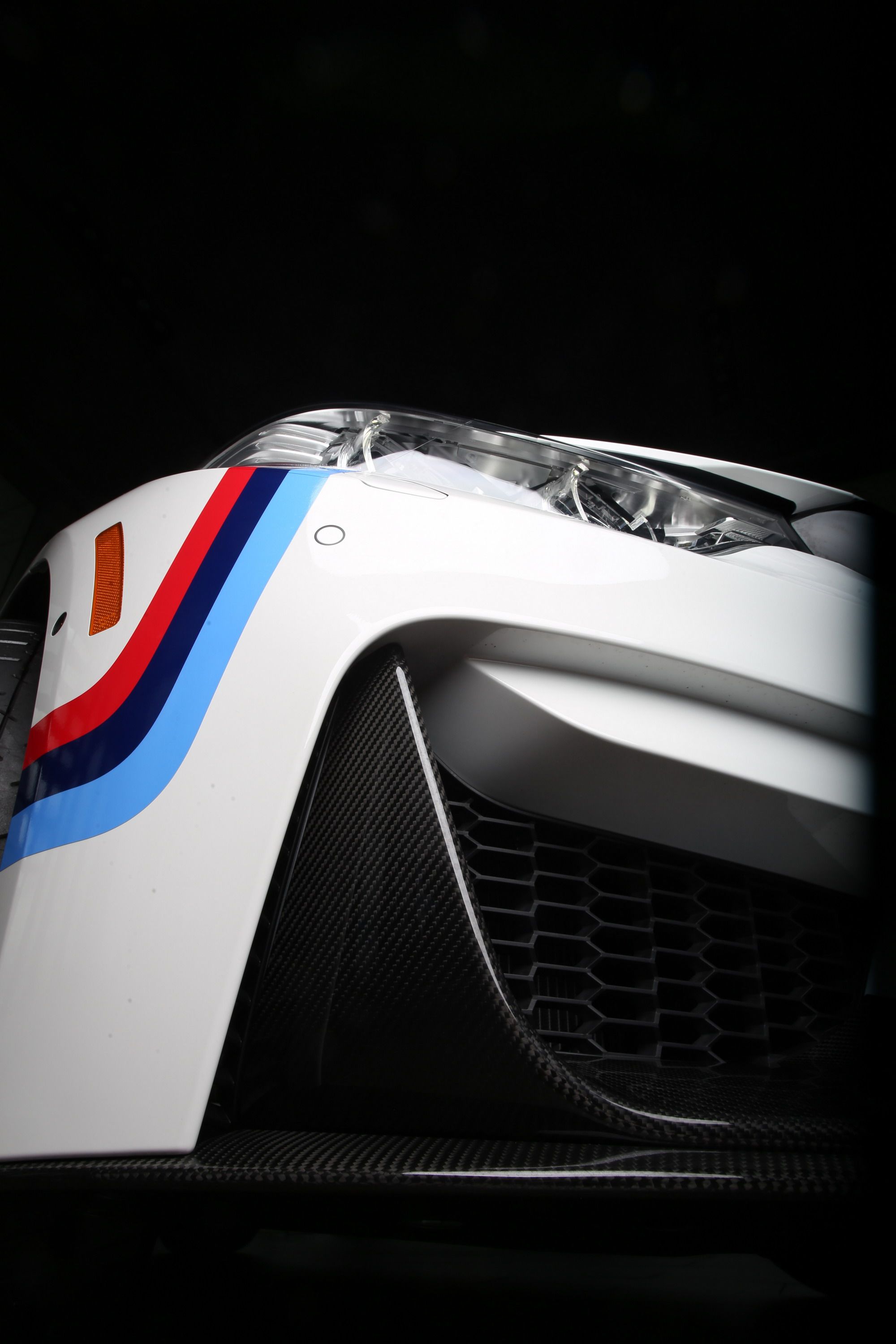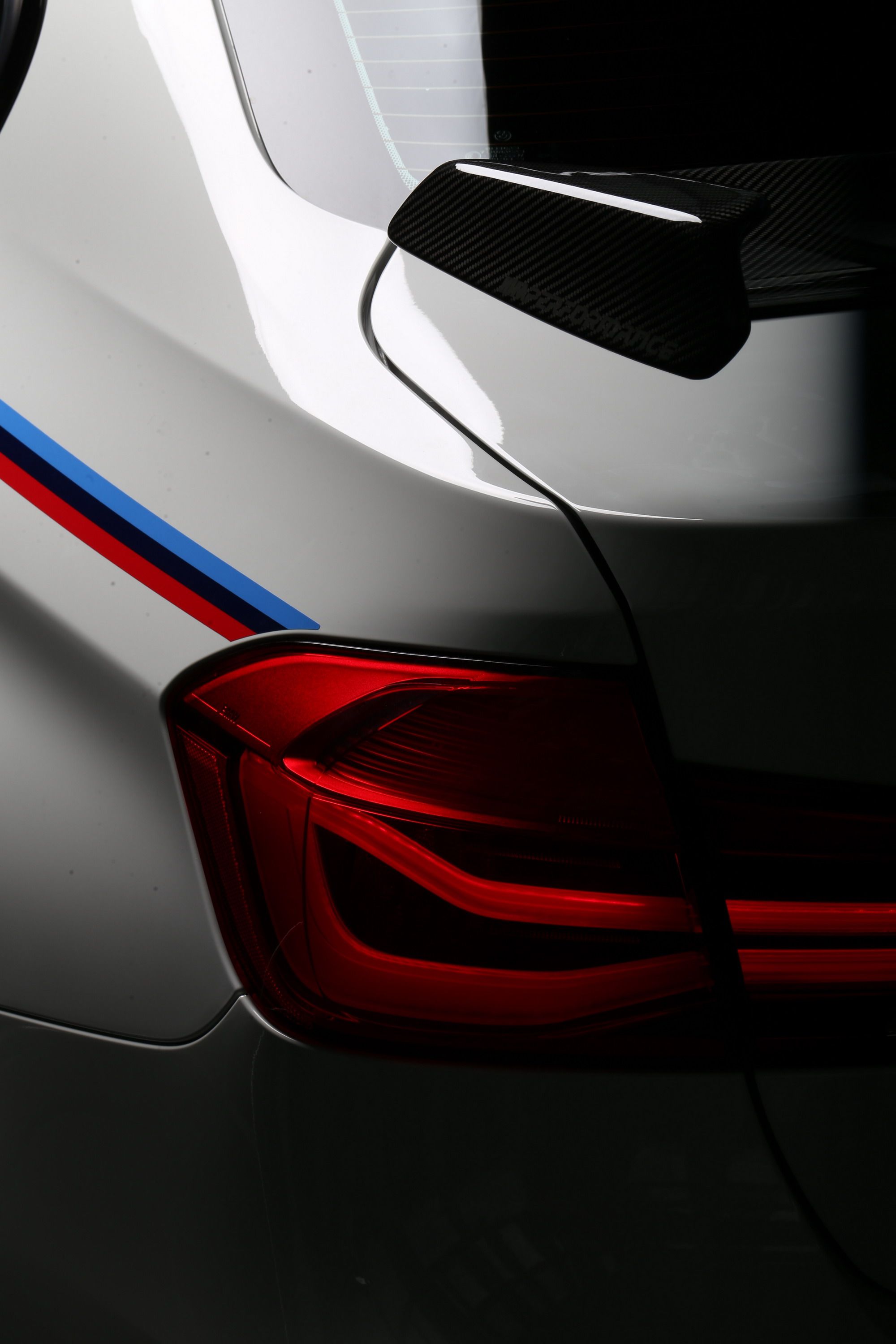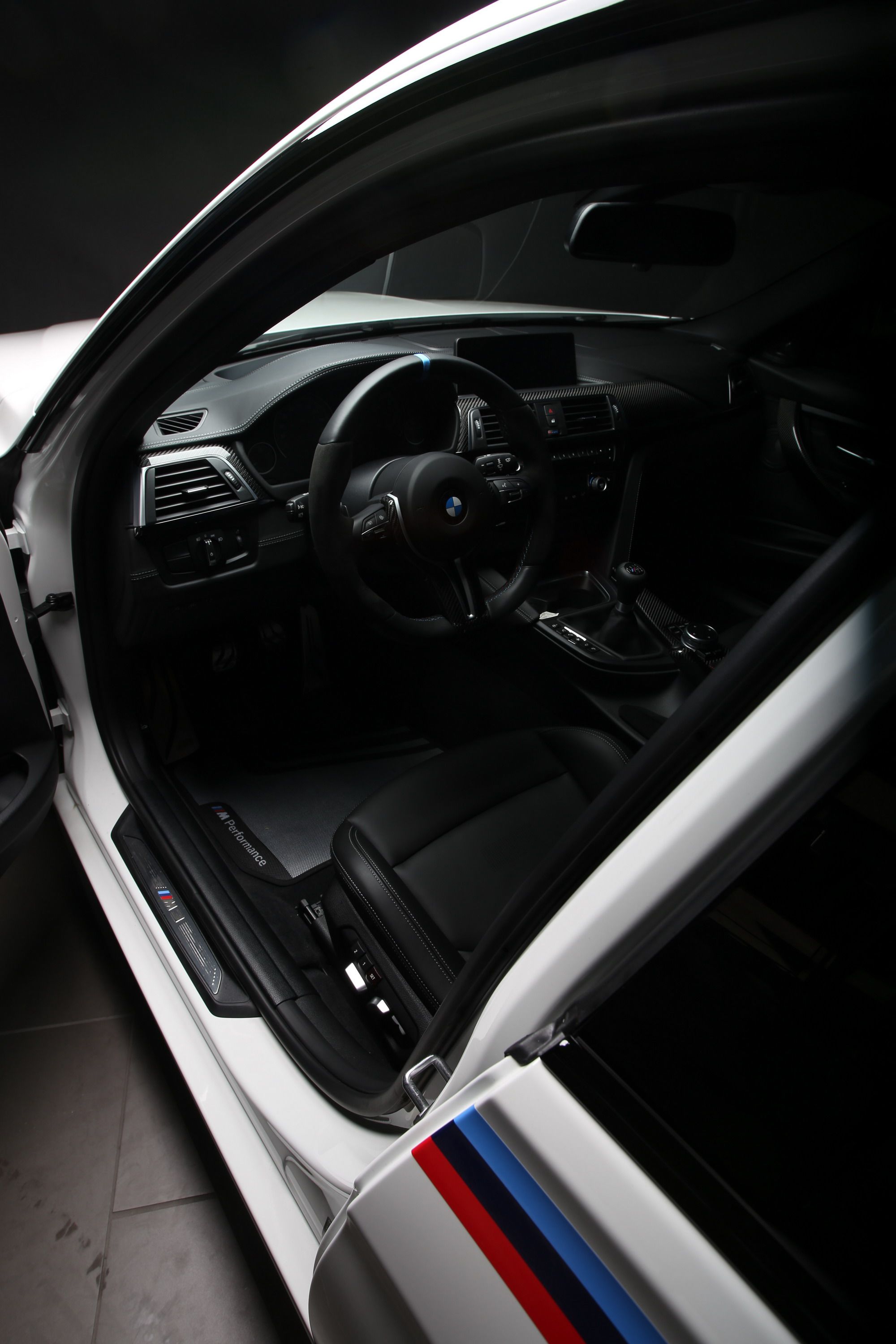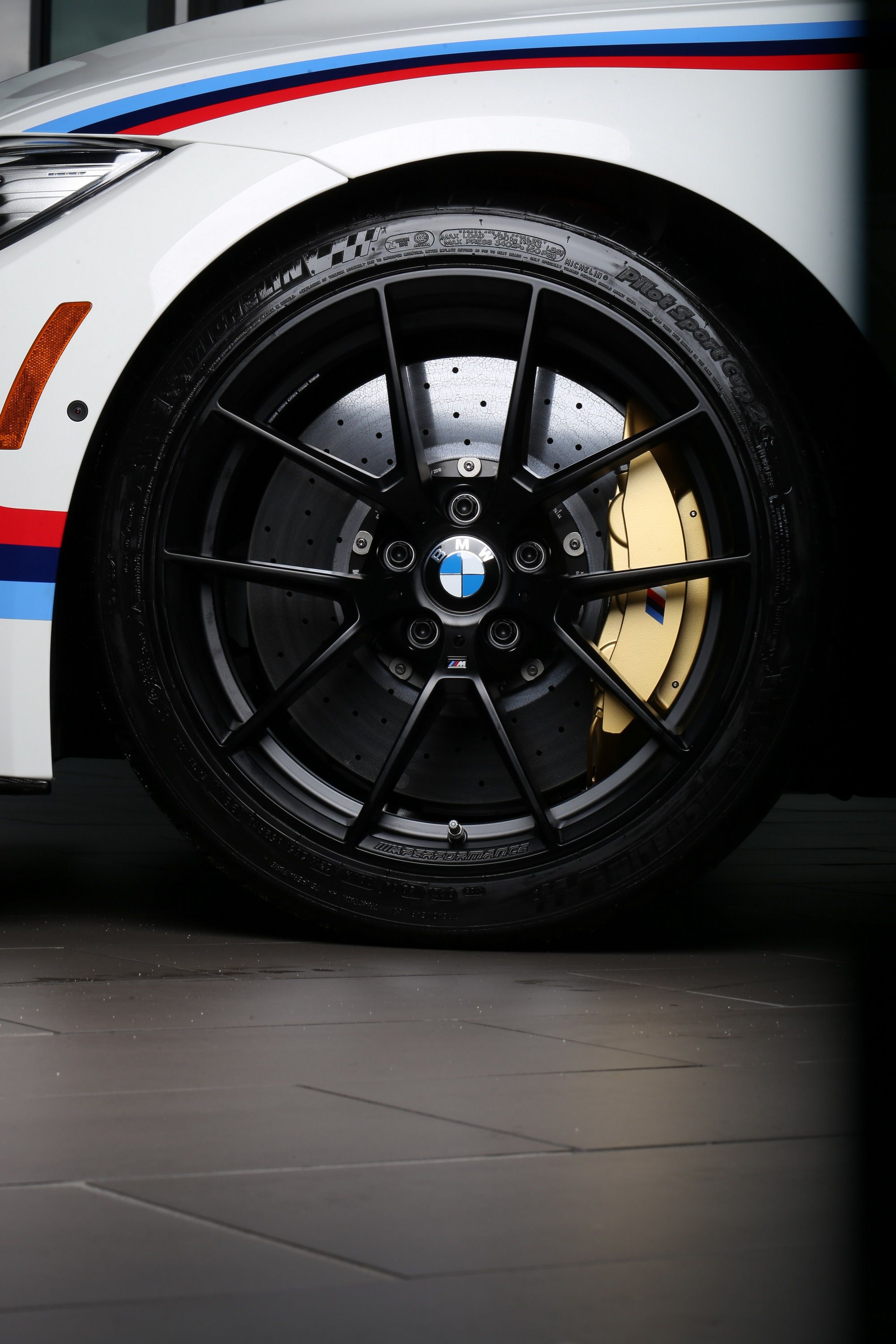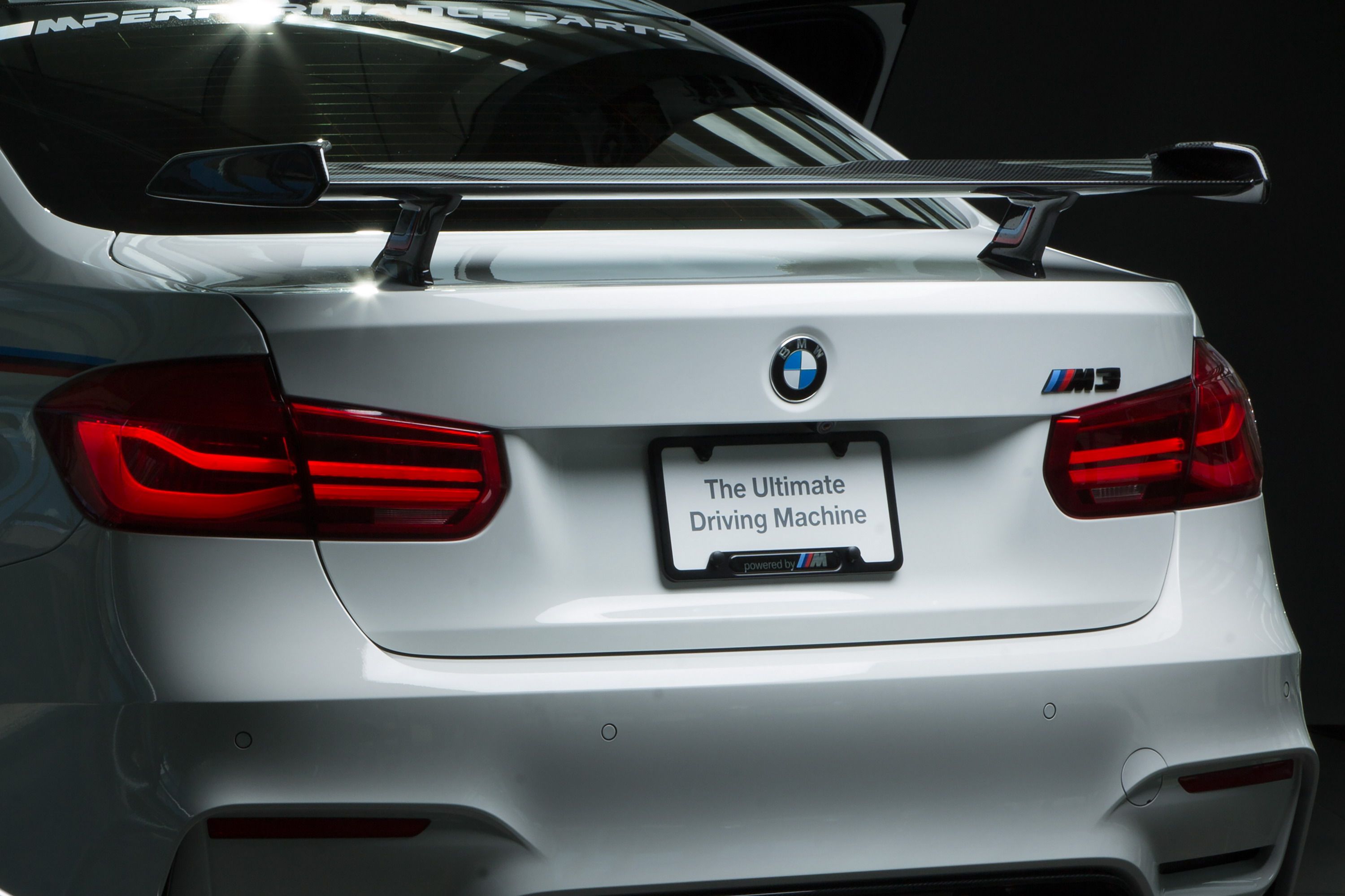The SEMA Show may be about aftermarket parts and significantly modified vehicles, but it's also an event where automakers showcase less extreme upgrades and accessories. BMW falls in the latter category at this year's event, where it will introduce a range of M performance parts that will be offered to the public starting 2017. The new updates will be showcased on a range of production cars, one of which is an M3 sedan.
The high-performance four-door is fitted with an array of aerodynamic features, some inspired from the world of motorsport, as well as new wheels, carbon-fiber elements, and a revised suspension system. More importantly, the car will be used to mark two world debuts, both set to hit the market in 2017 for several nameplates.
The fact that the German carmaker chose to launch most of its new M-badged upgrades at the SEMA Show isn't surprising. The U.S. is the largest market for M performance parts and accessories, with 20 percent higher revenue than Germany, the second largest market for such options.
The M3 will sit in the BMW booth alongside other upgraded cars, including an X5 and a 340i. The German brand will also display a special BMW 740e xDrive iPerformance crafted by the Individual division, as well as an M2 Safety Car.
Continue reading to learn more about the BMW M3 With M Performance Parts.
2016 BMW M3 With M Performance Parts
- Make: Array
- Model: 2016 BMW M3 With M Performance Parts
- [do not use] Vehicle Model: Array
What makes the BMW M3 With M Performance Parts special
Looking at the car's front fascia you probably won't notice too many differences from the standard model outside of the M-specific stripes on the bumper and sides, and the blacked-out grille. However, look at the sedan's rear end and you'll get a glimpse of the first all-new feature that BMW designed for the M3. I'm talking about the fixed rear wing sitting atop the trunklid. Made completely from carbon-fiber and adorned by racing stripes, the wing was created using know-how from motorsport and it's supposed to improve aerodynamics and downforce, especially at higher speed. Granted, it won't make much of a difference at cruising speed, but it will help during those fun track weekends. Not to mention that it looks pretty cool in that clear-carbon finish. Market launch is planned for mid-year 2017, meaning you'll be able to order one for the 2018 model year.
Another brand-new M feature that makes its official debut on this M3 are the performance light alloy wheels. Measuring 19 inches at the front and 20 inches to the rear, the rims are milled and weight-optimized entirely from a forged blank and provide better steering behavior, which results in a further increase in driving dynamics. They also feature an exclusive twin-spoke design and are finished in matte-black for a sportier appearance. The rims come wrapped in Michelin Pilot Sport Cup 2 tires for maximum grip and performance. The production part will go on sale in summer 2017 for the M2, M3, and M4 models.
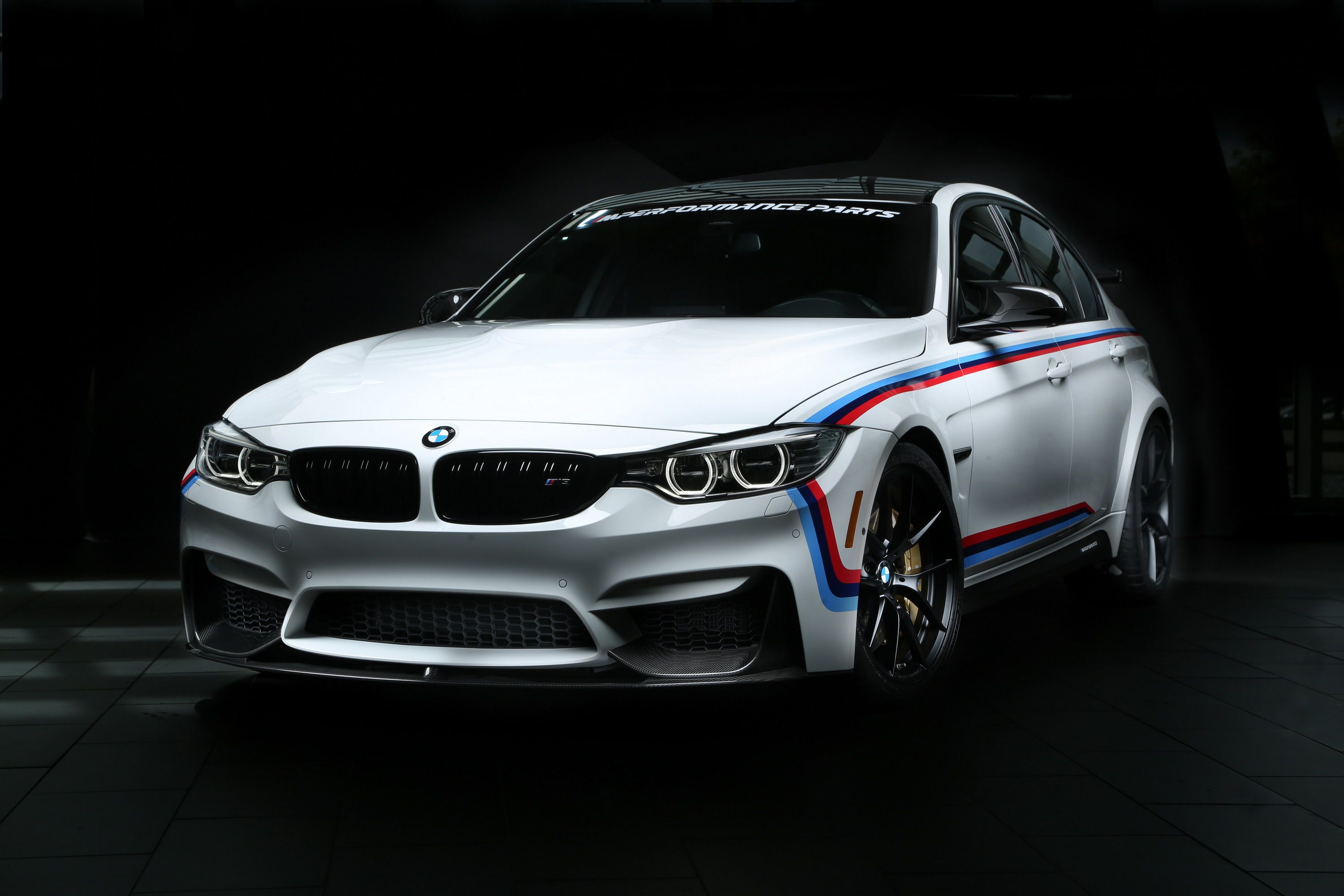
|
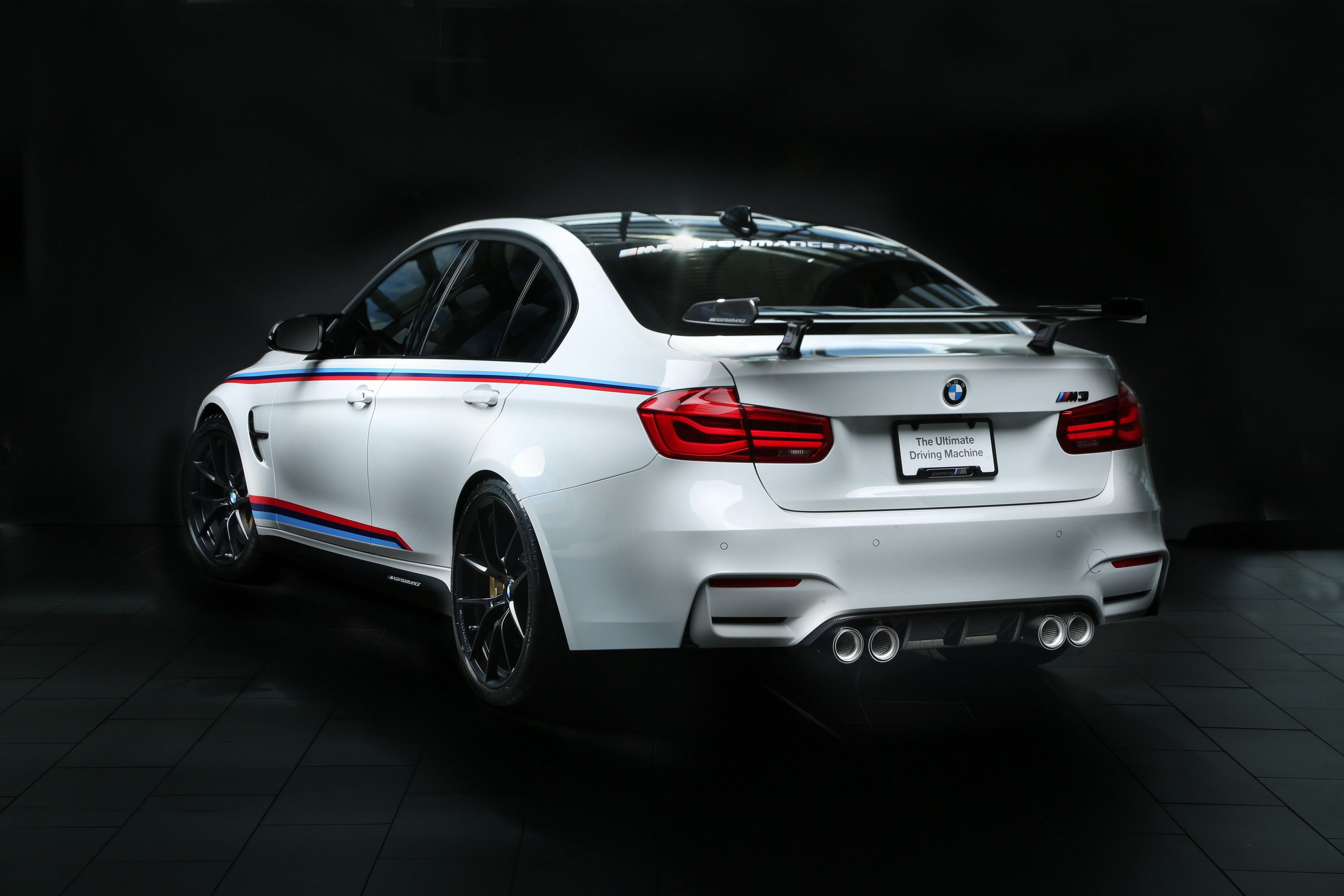
|
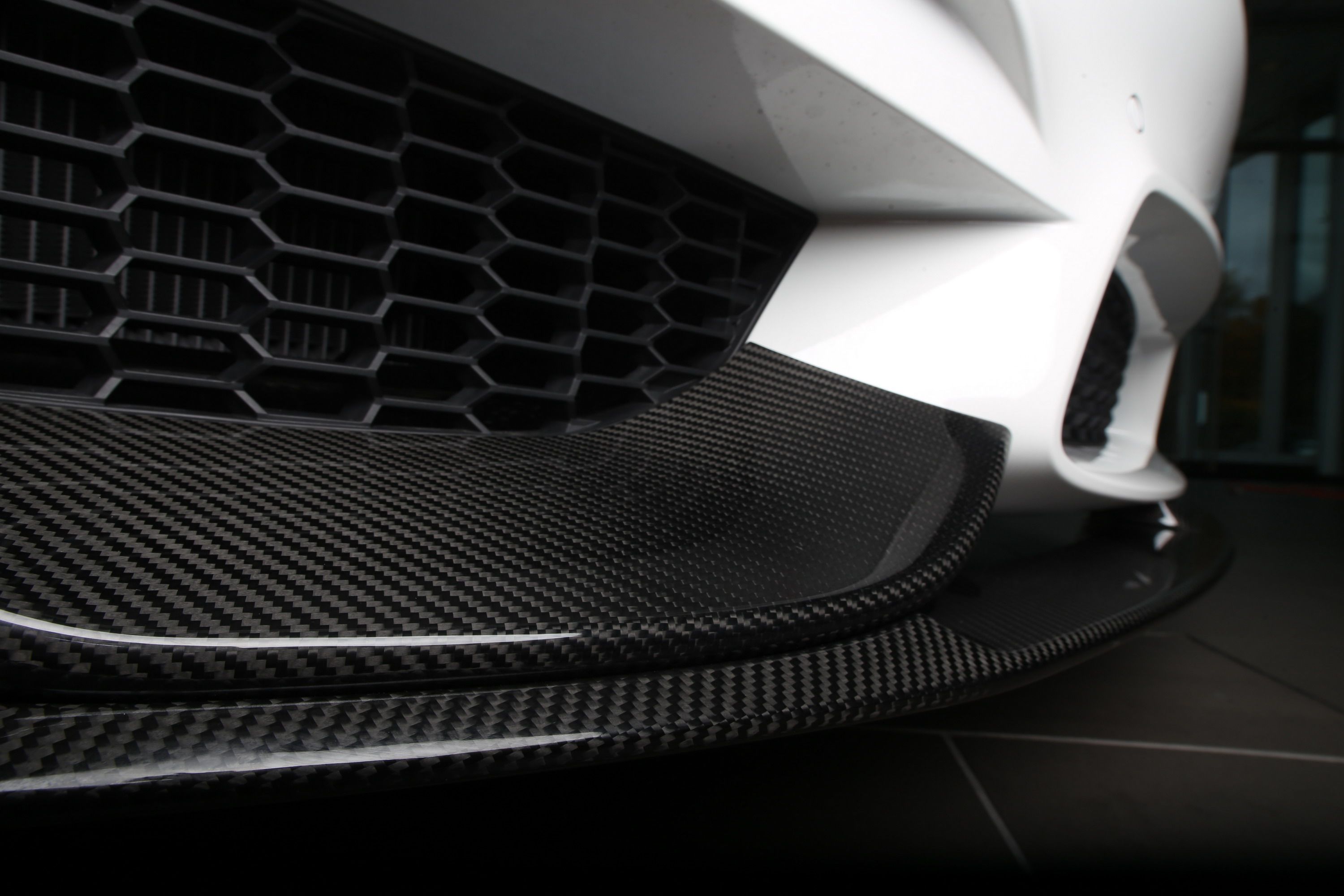
|
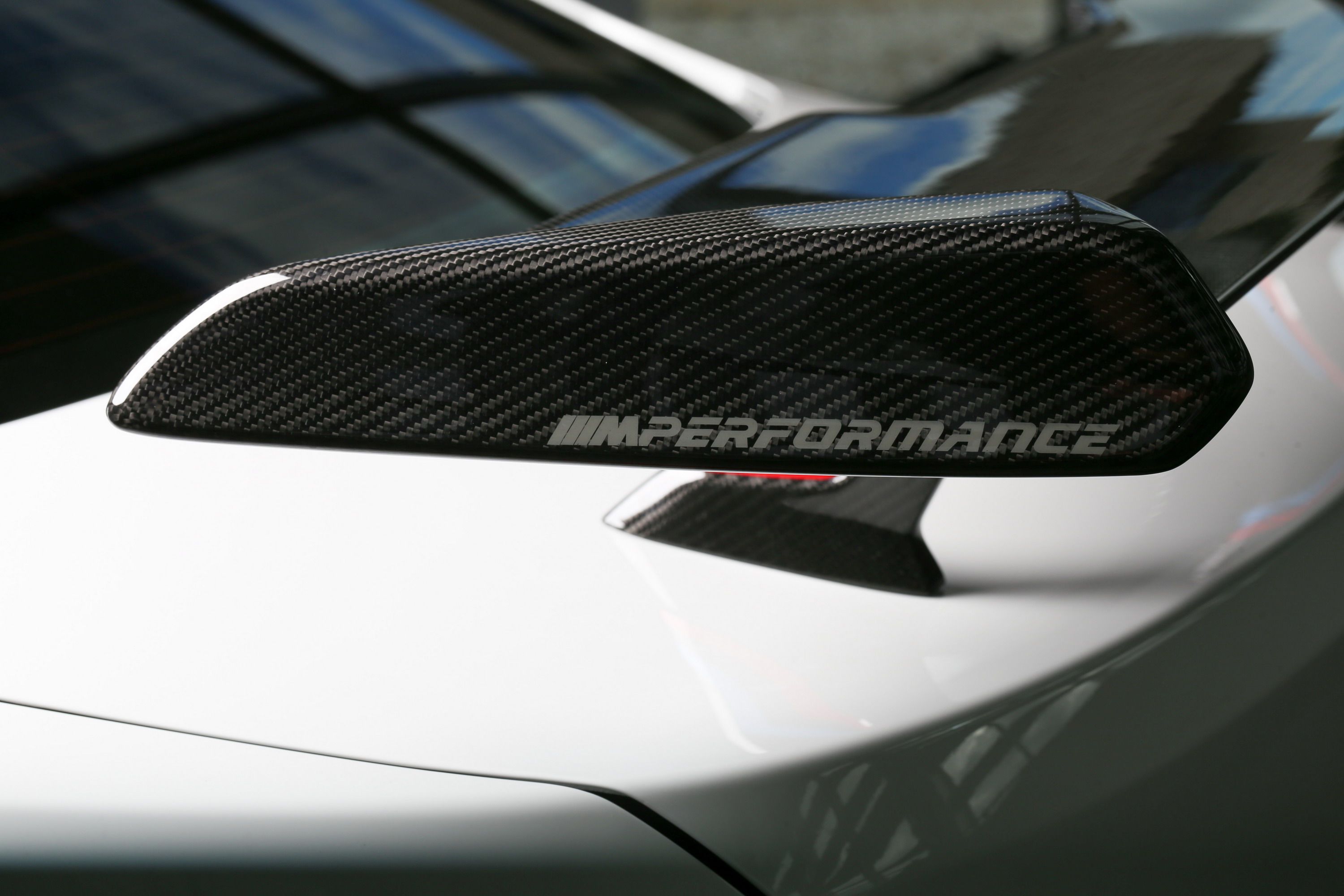
|
Finally, BMW will also launch an enhanced M Performance package for both the M3 and M4. It will include a black front grille, a carbon-fiber rear spoiler, as well as the “M Performance” lettering on the rear side sills. The bundle will also include the M Performance Exhaust system, a titanium silencer (stainless steel for the M2,) and M Performance carbon tailpipes with the M logo.
The interior of this M3 is as stock as it gets, but BMW says that models with a manual transmission will get a carbon-fiber shifter knob with an Alcantara boot, carbon handbrake grip, and an M Performance steering wheel wrapped in Alcantara with carbon trim.
The drivetrain remains unchanged as far as performance goes, but the concept does showcase a new M Performance carbon engine cover. Made from high-grade carbon-fiber-reinforced plastic (CFRP), it adds a racing look when the hood is open.
More upgrades were made in the suspension department in the form of new coilovers and shock absorbers with contrasting red coil springs. The revised setup will allow the driver to lower the vehicle’s ride height between 0.2 to 0.8 inches via the adjustable spring plate. This also lowers the center of gravity, allowing for optimal ride height for the track or the road.
Pricing information for any of the new parts is not yet available, but BMW should spill the beans closer to their launch date.

